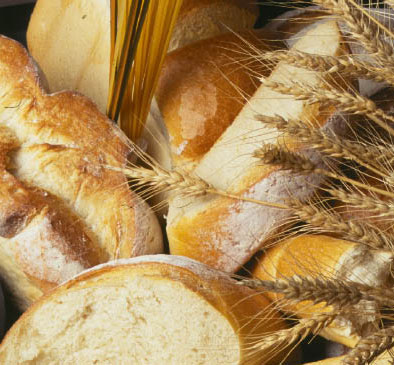The challenge
Does α-amylase actually reduce grain quality?
Wheat is a major source of carbohydrate and protein in human diets. Carbohydrate is stored in the wheat grain as starch which makes up more than 70 per cent of total grain dry weight. The plant uses this stored energy during germination to fuel the first stages of seedling growth.

α-amylase is considered to be one of the primary enzymes responsible for initiating the breakdown of starch during germination.
Late maturity α-amylase (LMA) and preharvest sprouting (PHS) are genetic defects in wheat. They both lead to a high level of α-amylase in the grain prior to harvest.
To test for LMA and PHS, a Falling Number (FN) (test of gel viscosity) is performed and if the number is low then the grain is downgraded, often to feed grade, and farmers get a lower price for their wheat.
The FN test assesses α-amylase activity so it is unable to distinguish between LMA and PHS. This means that both defects are treated similarly when grain is traded.
PHS has an impact on the end uses of wheat, such as baked products and noodles, as the proteins and starch are digested in the grain.
It is assumed that high levels of α-amylase lower baking quality, however, no studies have been conducted to determine whether this is in fact the case. In fact, bakers have long added α-amylases either in the form of malt flour or modern commercial enzyme preparations to improve the volume of their baked goods and shelf life.
Australian wheat breeders are required to screen for LMA before they release new wheat lines to growers. This occurs late in the processes and can delay, or prevent, the release of higher yielding wheats that would have significant benefits for farmers.
Our response
The truth about α-amylase rises to the surface
We applied our expertise in wheat genetics to investigate the impact of specific α-amylase isoforms on grain quality.
We conducted small loaf baking studies on engineered high α-amylase lines that had an apparent low FN. Wheat lines with a low FN would normally be classified as severely sprouted and sold as feed wheat, however our experimental lines showed enhanced loaf volume and crust colour.
The results
Uncovering the whole story
Our findings raise questions about the validity of the assumptions that LMA is detrimental to end product quality and that a low Falling Number is always indicative of reduced quality.
This suggests the need to better understand of the impact of elevated expression of specific α-amylase on end product quality in order to develop the appropriate response to solve LMA and PHS.
If agricultural production is to increase in an environment of increased pressure on land use, reduced availability of inputs and increasing climate uncertainty, there is a need for a thorough investigation into the effect of LMA on grain quality.
Currently, large numbers of otherwise excellent advanced wheat lines are potentially discarded as LMA susceptible despite there being no scientific evidence to show that LMA is detrimental to end product quality.
